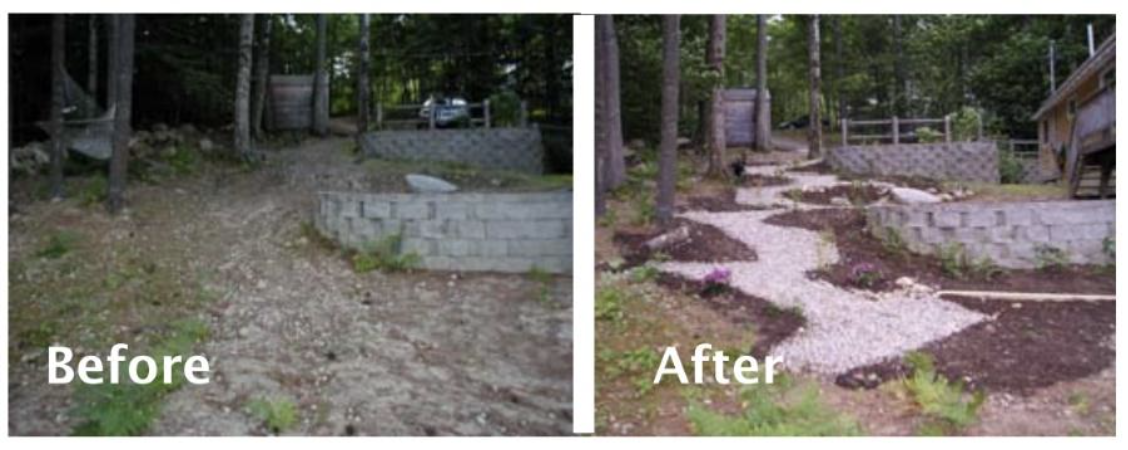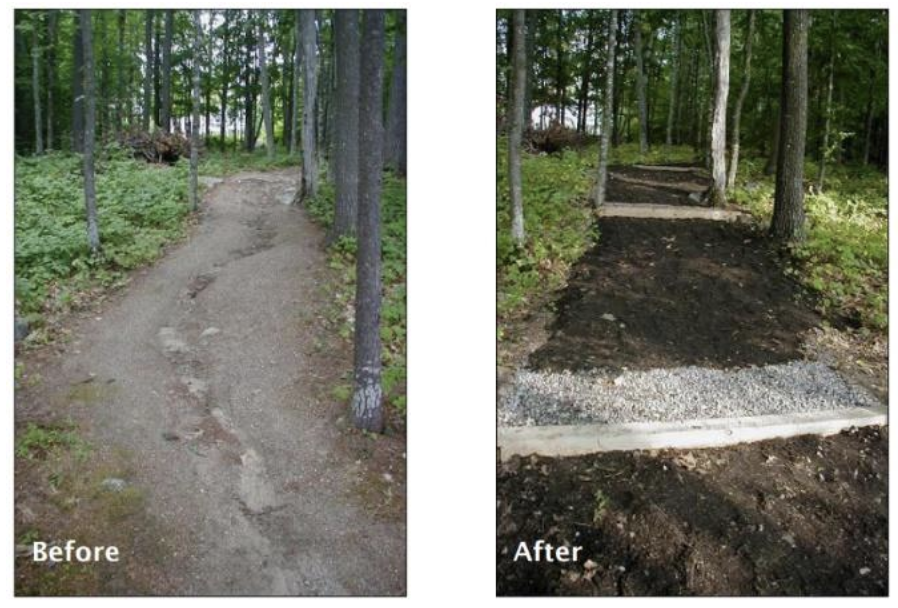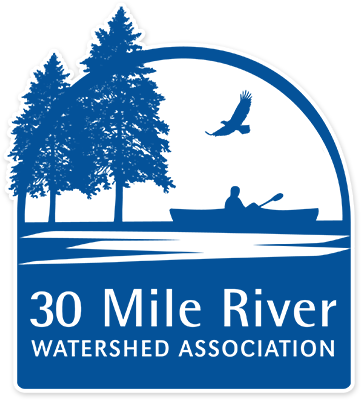People most often will take the shortest path to the lake, and so will storm-water runoff. A shorefront path or walkway provides lake access for lake users, and when designed properly, can be a great benefit for both landowners and water quality, reducing your overall impact on the lake. However, when not designed correctly, paths and walkways can also provide quick and easy access for polluted stormwater runoff and become a source of erosion and phosphorus for years if left untreated. Is your shorefront path hurting the lake? Not sure how to tell?
Shorefront paths and walkways offer many benefits:
- Paths define and direct foot traffic on the shorefront. This reduces your impact on your shorefront and lessens the potential for erosion.
- Reducing the potential for erosion on your property means you are reducing pollutants flowing from your property into the lake.
- Limiting foot traffic also minimizes disturbance of the shoreline buffer vegetation. Compaction of soils by foot traffic alone can be enough to damage roots and prevent the growth and spread of natural vegetation on your shorefront.
However, paths and walkways must be designed properly. Paths should be limited in number, narrow, meandering, and built of stable surface materials that cover and protect soils from erosion:
- Paths should be narrow – no more than 3’-4’ wide.
- Path surfaces should be covered with 3”-4” of material such as Erosion Control Mix (ECM), pine needles and duff, bark mulch, crushed stone, or other material that can cover or protect bare soils and absorb rain water. These surface materials will help define the path, guide foot traffic, and reduce soil erosion.
- Paths should be meandering, depending on the slope, and provide opportunities for runoff to exit the path into adjacent vegetation.
- If possible, paths that go directly down slopes toward the lake should be rerouted. If this is not possible, infiltration steps or waterbars can break up the slope and redirect runoff into adjacent vegetation.
- If formal paths or walkways do not currently exist, new paths can be clearly marked with strategic plantings, stones, logs, solar lights, etc. along the edges to direct traffic.
30 Mile’s Youth Conservation Corps (YCC) program is your expert source for recommendations for your shorefront paths and also provides labor to shorefront landowners in our watershed who want to install or improve their shorefront paths and walkways! For more information about 30 Mile’s YCC program, or to request a free site visit, visit our YCC page.
See Maine DEP’s Factsheet for shorefront paths and walkways here.


